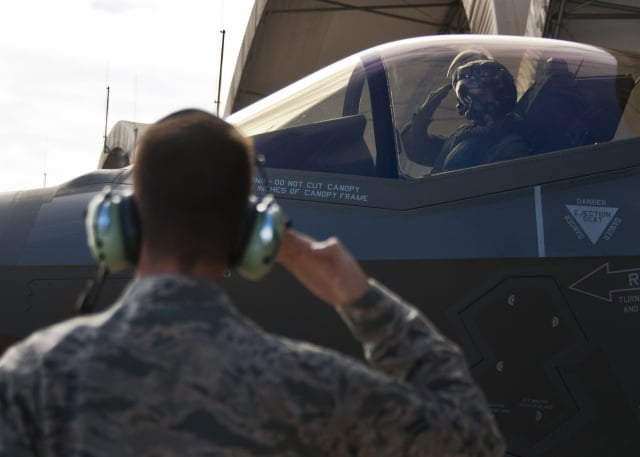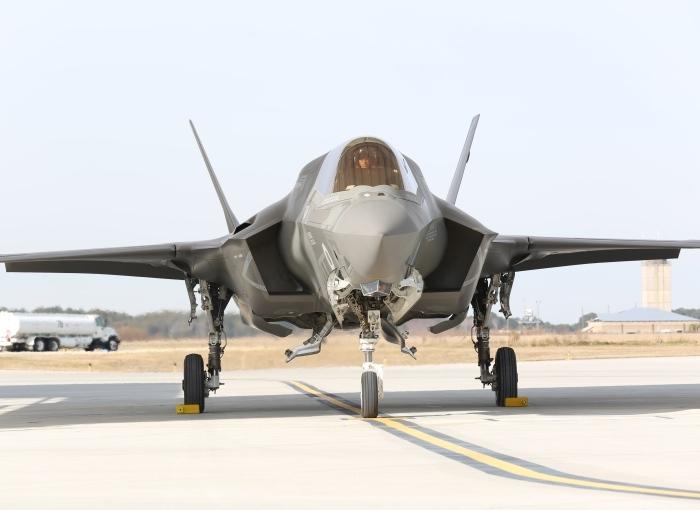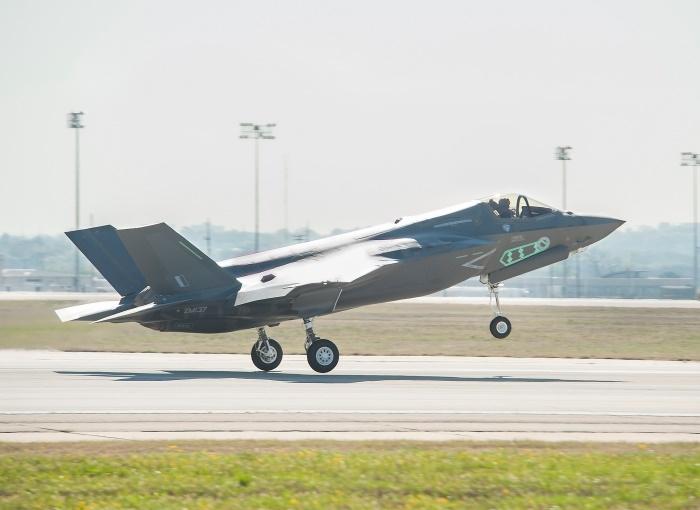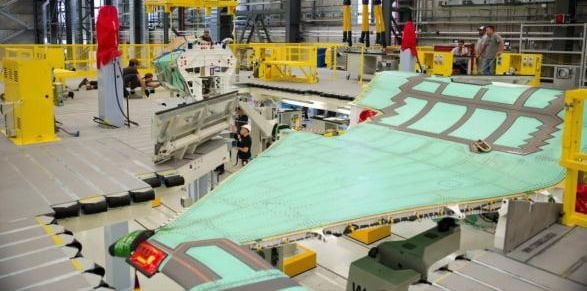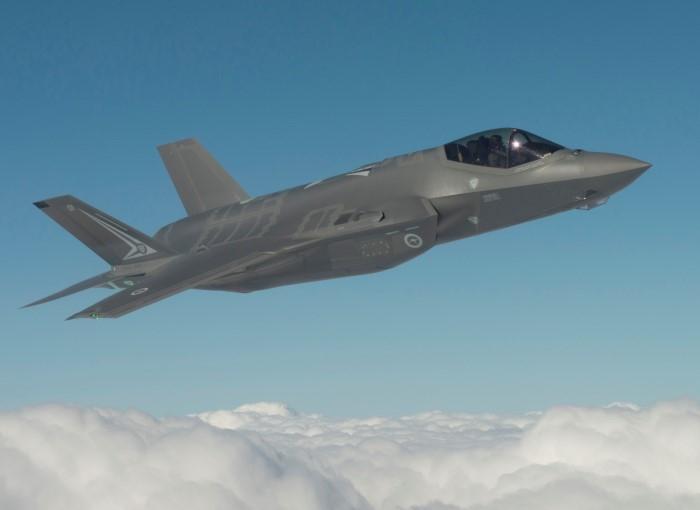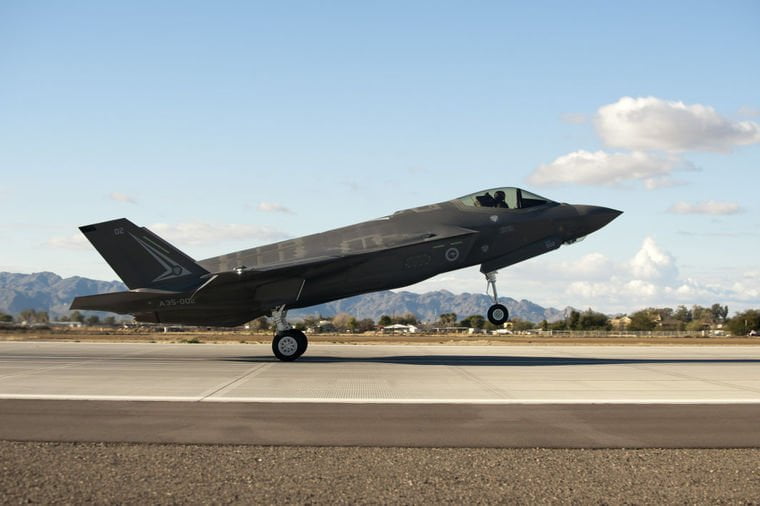2015-02-18 By Robbin Laird and Ed Timperlake
In a meeting in the United Kingdom in November 2014 with one of the RAF officers responsible for the introduction of the F-35 into the UK forces, Group Captain Paul Godfrey highlighted the behind the scenes work to roll out an F-35 fleet, an effort largely ignored by the analytical press.
“There are 115 F-35s flying now.
We are focused on how we are going to use the capability, not whether it will exist.
There is a huge gap between the users of the aircraft and the broader puzzlement over the future outside of the warrior community; we are just getting on with it.
We just need to encourage thinking that isn’t tied to whatever we’ve done in the past.
The F-35 fleet is different and can be used for force transformation; unless you don’t.”
While more direct than most, the Group Captain’s comments reflects the reality as seen by those in the U.S. services and in U.S. allied partners involved in bringing the F-35 fleet to life. It starts with the USMC, F-35B and will accelerate through the next three years. The USAF recently had its first F-35A arrive at Nellis AFB configured for the rollout of their first squadron next year.
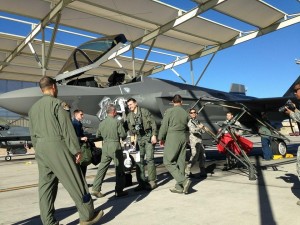
While the Chinese and Russians introduce their “fifth generation,” as only defined by stealth attributes, the US and its allies are preparing to launch a global fleet of “flying combat systems” with integrated combat systems. The Chinese and Russians have clients for their military weapons; the U.S. has allies and what is unique about the F-35 is it is jointly funded and jointly operated by a global coalition.
The initial operating capability of the F-35 is not simply about the introduction of a replacement aircraft but the next phase in a revolution of airpower that will be inextricably intertwined with doing air combat differently. In our discussions with the pilots, maintainers and industrialists involved in the launch of the F-35, there is clear awareness by all that the F-35 is not simply about business as usual. There is a clear sense of excitement seen by the F-35 launch cadre, which is missed by those not part of the process.
Each service or partner has a launch point that will drive F-35 enabled transformation. Combat pilots and commanders recognize that this is not a replacement aircraft in and of itself, but rather it is the driving technology catalyst for a transformation of combat air power in this next phase of military aviation history. Put in other words, it is not a by itself platform – it is a driver, enabler and transformative element in the re-shaping of airpower.
We have had the opportunity to visit three key centers for the operational launch for the F-35, MAWTS-1 MCAS Yuma, and VMX-22 for the USMC, Naval Strike Air Warfare Center, NAS Fallon for the USN and Nellis’s Air Warfare Center for the USAF.
In all three centers F-35 teams are looking both inward and also reaching out to work jointly with each service partner to help integrate the aircraft within airpower legacy technology and operations. The coming iterative dynamic sharing, of new training, tactics and technological innovations is especially noteworthy because throughout that never ending process allies will also add their perspectives to the learning cycle.
The USMC is the first user of the F-35, and is on track with plans to declare IOC in 2015. Because the Marines are an integrated air-ground-sea force, their combat force preparation and initial experience with the F-35 will have significance far beyond just the USMC and is being closely tracked, watched and discussed by a number of partner nations in the F-35 program.
Precisely because the F-35 is coming at the end of an innovative decade of introducing the Osprey into operations, the F-35 is the next big step forward in the transformation of the USMC.
With the Osprey, the Ground Combat Element (GCE) gained range and speed to operate on land or from the sea; this range and speed has led to several changes in how the Marines operate and these changes are being embodied in a new class of large deck amphibious ships, the USS America class, which has been specifically designed to operate both the Osprey and the F-35.
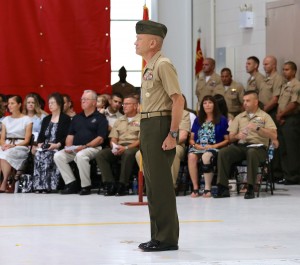
As the Deputy Commandant of Aviation, General Jon Davis put it:
The F-35B will mirror the MV-22’s assault support revolution across three key functions of Marine Aviation: anti-air warfare, offensive air support and electronic warfare.
A 5th Generation aircraft will enable our MAGTFs (MEUs, MEBs and MEFs) to fight any adversary, anywhere, from small deck amphibious carriers or expeditionary forward operating bases ashore.
https://sldinfo.com/lieutenant-general-davis-on-the-usmc-and-the-f-35-preparing-for-2015/
Next up is the USAF, the service which will be the largest user of the F-35. The USAF is unique in that it will operate two stealth aircraft – the F-22 and F-35 – and not also looking at synergistic combat effects they can test them against each other to prepare for those adversaries who will deploy their own version of stealth in the years ahead.
It is ultimately the impact of an integrated fleet of F-35s with fused data and distributed decision-making, which will allow the USAF to rethink how to do 21st century air operations.
In our recent visit to the Air Warfare Center at Nellis it is clear that the Weapons School and associated elements within the Center are getting ready to roll out its own version of force transformation associated with the F-35.
Evident from our interviews at Nellis is the very clear notion that for the US Air Force the F-35 is not simply about the platform but how the new combat aircraft can augment 21st century air combat operations.
The way ahead was put very clearly by Major General Silveria, the Commander of the USAF Warfare Center:
The USAF will be the largest user of F-35s but we have many partners worldwide who are investing significantly in the aircraft. Our ability to work together is going to be a fundamental aspect of shaping our working relationships going forward and helping one another to deal with difficult combat situations ahead.
The aircraft will demand a culture change, and understanding the adaptability of the aircraft is at the center of the culture change.
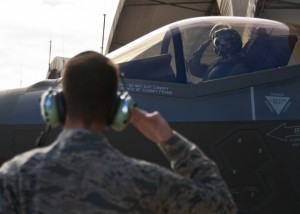
The last of the U.S. airpower services to put their F-35 into operation will be the US Navy. The USN benefits significantly from earlier service investments in the common combat systems across the three variants the USN will fly the F-35C.
For the carrier Navy, the F-35C comes at a very crucial time. On the one hand, the threat envelope is going up as competitors like China are looking to enhance their long range strike capabilities against the Carrier, although striking a well defended carrier maneuvering in the open sea at 30 plus knots is much harder than critics seem to realize. On the other hand, a new Carrier class is coming on line, one which is designed with the F-35C in mind.
A visit to Fallon Air Station highlighted how the USN is preparing to expand their capabilities to operate in an expanded battlespace. At Fallon, the Navy trains to provide an integrated air wing to deploy aboard the Carrier. Because of the need to prepare for an expanded battlespace, at Fallon they are laying down the foundation for virtual live constructive training to reach beyond what can be trained to in a physical range. This means training pilots and commanders to deal with expanded reach of red forces as well as an ability to reach more effectively into maritime and joint forces as well.
As the Commander of the Naval Strike Air Warfare Center, Rear Admiral Scott Conn discussed the way ahead for Naval Aviation:
In looking to the future, in five years we are going to have JSF in the fleet.
In five years we may have UCLASS on our carriers. In five years, the Super Hornet of today is going to be different.
In five years the E-2D capabilities and our networks will have matured.
In five years the threat is going to change and competitors will have more capability.
In working with Naval Aviation Leadership, we are on a journey of discovery of how to best create a training environment that replicates potential adversary’s capabilities.
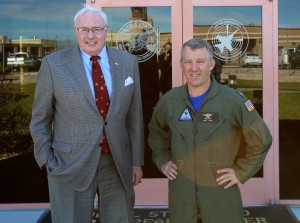
It is this shift to preparing to fight in the expanded battlespace when the F-35 C will enter the carrier air wing. It is about expanding the reach of the carrier, not simply relying on the organic range of any particular organic asset.
The head of Naval Air Warfare, Admiral Manazir highlighted how he sees the transition:
It is as challenging right now to figure out how to use this fifth generation capability as to deal with the “red” side.
We’re thinking about integrating the weapons system capability…not the platform…in reshaping the airwing – that is the challenge.
In the past, any high-end capability, like the F-117 in Desert Storm, went by itself. The approach was: leave me alone, don’t touch me; I can operate more effectively alone. From this perspective, fifth generation is understood as a high end, leave alone capability: the capability to go downtown with a low probability of intercept, low probability of detection data link and associated weapons systems that allows the platform to operate inside the red battlespace.
We are not simply doing that.
We are focused on the ability to connect into the integrated fire control network, pull that fifth generation information into the network.
We’re learning a lot of lessons from F-22, we’re bringing those lessons on as our corporate knowledge starts to gell so we understand how to do this effectively.
You captured the exact point.
We think of integrated capability.
If you take this fifth generation airplane that people like to keep by itself, how do you integrate into the strike group? But integration from the blue side is the key challenge and advantage of adding fifth generation to the airwing.
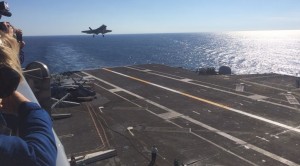
And for the partners, the introduction of the F-35 is part of an overall process of defense transformation. For the Royal Australian Air Force, it is a foundational element in what Air Marshal Brown RAAF Chief of Staff refers to as Plan Jericho, whereby the synergy among their new platforms is taken to another level with the capabilities of the F-35 as a flying combat system.
For the Royal Air Force and Royal Navy it is about the synergy between the F-35 and its new carrier and shaping new capabilities to be deployed to meet 21st century threats and to fulfill 21st century missions.
The most neglected aspect of the IOC of the F-35 is its global nature.
It is not just about the three U.S. services, it is about partners and allies concurrently rolling out their F-35s and sorting out how their new air systems transform their forces. The F-35 is not an airplane; it is a global air combat system.
The USMC and the smaller partner air forces due to their size will find very innovative ways to leverage their F-35s within their operational situations. The USAF as the largest user of the F-35 will find unique ways to combine F-35s with their other assets in shaping a more effective air dominance enterprise.
And the USN will focus on how the F-35C enables a more effective integrated Command and Control effort to greatly empower the evolving integrated air wing and Navy surface warfare ships and their submarines.
Each service and partner will provide ways to think about how the F-35 transforms their approaches; and the sharing of these ways to think will empower the overall joint and coalition combat capabilities for US and allied joint and coalition forces as well.
In other words, rather than thinking of an IOC it is better to focus on rolling out of a global fleet which will help re-shape collaboration and innovation in 21st century combat operations. The F-35 is enabler and a catalyst it is not just an end in and of itself.
As Major General Silveria summed up the strategic direction:
The term integration can be confusing because it really is about the evolving capabilities of the combat air force going forward and to shape the combat choreography of many moving parts to shape the effects you want to achieve with airpower.
And with the F-22 to date and with the F-35 entering the combat air force, it is about how legacy aircraft can adjust to the new capabilities and the combat team learn how to use both the legacy and the new aircraft more effectively together.”
For an earlier version of this piece published by Defense News on February 16th see the following:
The slideshow above shows various partner F-35 planes in process.
The first two showAustralian F-35As.
The third shows Dutch F-35As.
The fourth shows the FACO at Cameri assembling an Italian F-35A.
The fifth photo shows the first Norwegian F-35A being assembled at Fort Worth.
The final photos show the UK F-35Bs at Edwards and Beaufort MCAS.
Credit Photos: Australian MOD, Lockheed Martin, Finmeccanica, the UK MOD and the Norwegian MOD.


